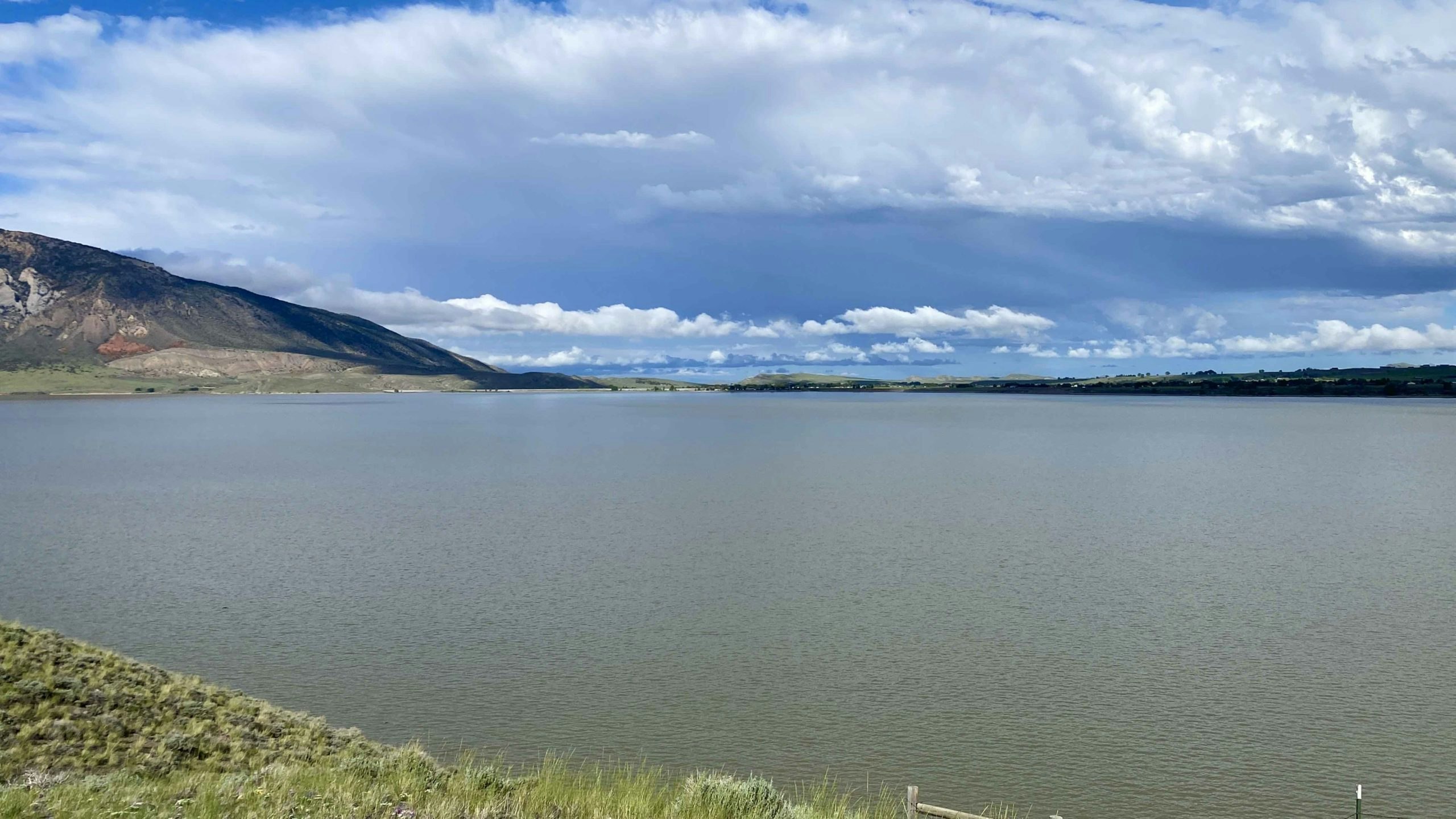**For All Things Wyoming, Sign-Up For Our Daily Newsletter***
Reservoirs in northern and central Wyoming are filling up — and fast — in the wake of historic flooding that forced the closure of Yellowstone National Park last week.
Earlier this spring, water storage at the Buffalo Bill Dam was only at 60% of its capacity. But after last week’s flooding, inflows have increased dramatically, bringing levels at Buffalo Bill, Yellowtail and Boysen reservoirs to near-full.
“(Buffalo Bill) Reservoir came up approximately 13.5 feet in the last seven days,” said Elizabeth Cresto, acting Water and Civil Works Branch Chief for the Bureau of Reclamation’s Wyoming Office.
“Think of a football field 1 foot deep,” Cresto said, explaining how officials measure water storage in acre-feet. “So inflows into the reservoir equated to about 142,000 acre-feet of water flowing into our reservoir in the last seven days.”
For a reservoir that has a capacity of 647,000 acre feet, that equates to over 21% of the total storage of the reservoir coming into Buffalo Bill in just a few days.
“Incredible Storms”
Cresto said the inflows to Buffalo Bill from the north and south forks of the Shoshone River increased from an average of 8,000 cfs (cubic feet per second) on June 6 to 15,200 cfs on June 13.
“Last month, when we were forecasting inflows into Buffalo Bill, we were not expecting that to fill,” Cresto told Cowboy State Daily. “With the incredible storms we’ve gotten between Memorial Day and this last week, and higher temperatures, we’ve now gained enough water in the mountains that we are going to fill Buffalo Bill, and we are adjusting releases from the dam to manage the reservoir levels as we approach filling it up.”
Clayton Jordan, hydraulic engineer for the Bureau of Reclamation’s Montana Office, told Cowboy State Daily that reservoir levels remained low throughout the spring due to lower amounts of snowmelt in the high country.
“The snowpack runoff was delayed due to the colder temperatures that we’ve been experiencing,” he said.
But with a sudden rise in temperatures the second week of June, that mountain snow began to melt quickly. Add to that a powerful, wet storm system that hovered over southwest Montana at the same time, and the mountains released all at once the moisture that otherwise would have come down more gradually.
“A week ago when the temperatures warmed up, it melted a lot of snowpack that was delayed, and pushed inflows pretty high to all the reservoirs,” Jordan said.
Yellowtail, Boysen
The capacity of Yellowtail Reservoir near Lovell is more than 1 million acre-feet and Jordan said after last week’s flooding, the reservoir is currently at 966,000 acre-feet, nearly 95% full with 100,000 acre-feet coming in just in the last two weeks.
That amount of storage usually isn’t reached until the end of June or early July, according to Jordan.
“The delayed runoff kind of sped things up quite a bit,” he said. “The runoff was a little bit more efficient. Because of the faster rate we got, we saw more of the runoff.”
Jordan pointed out that water inflow into Boysen Reservoir, just south of the Wind River Canyon in central Wyoming, increased so dramatically that the Bureau of Reclamation had to double the reservoir’s outflow from 2,300 cfs to 4,800.
“At the end of (May), the content of Boysen reservoir was 590,000 acre-feet,” he said. “And then as of midnight (Thursday night), the content is 696,000,” Jordan said – an increase of 106,000 acre-feet of water in just two weeks, one-seventh of the entire capacity of Boysen reservoir.
“We were going into the runoff season with below-average snowpack,” Cresto explained, “and then we had this cool wet period where we normally would experience runoff, but we had really low runoff in April and May. And then we had abundant moisture on top of it. So we’ve really delayed the runoff season and we’ve compressed it a little bit.”
**For All Things Wyoming, Sign-Up For Our Daily Newsletter***





